Kashmir Playing Cards
Kashmir playing cards designed by Lev Liberman and printed by Printissa, Saint Petersburg, 2005.
Kashmir Playing Cards were printed by Printissa (Saint Petersburg, Russia) in 2005 in a limited run of 500 copies. Printissa was a collective of former employees of the Colour Printing Plant (1817-2004).
When the Plant was closed in 2004 several former employees organized Printissa and tried to continue to produce artistic decks. At least 10 packs were produced in 2005 including Centaurus, Fabergé, Morskie mify, and Russkii pel'menyi klub. Unfortunately, the enterprise was short-lived, but the quality of the cards and the range of artists employed were excellent.
The Kashmir playing cards were designed by Lev Liberman (1976- ), a specialist in graphic design and founder of the first school of calligraphy in the Urals. The deck is dedicated to the north-western region of the Indian subcontinent – Kashmir. It is also called the Heaven on Earth because of its natural widespread beauty. The artist has tried to capture this beauty in all 54 cards – the aces and court cards are detailed, colourful and imaginative, and the centre of each pip cards is adorned with a finely drawn image.



Above: ‘Kashmir’ Playing Cards designed by Lev Liberman and printed by Printissa, Russia, 2005. 52 cards + 2 jokers.
By Peter Burnett
United Kingdom • Member since July 27, 2022 • Contact
I graduated in Russian and East European Studies from Birmingham University in 1969. It was as an undergraduate in Moscow in 1968 that I stumbled upon my first 3 packs of “unusual” playing cards which fired my curiosity and thence my life-long interest. I began researching and collecting cards in the early 1970s, since when I’ve acquired over 3,330 packs of non-standard cards, mainly from North America, UK and Western Europe, and of course from Russia and the former communist countries.
Following my retirement from the Bodleian Library in Dec. 2007 I took up a new role as Head of Library Development at the International Network for the Availability of Scientific Publications (INASP) to support library development in low-income countries. This work necessitated regular training visits to many sub-Saharan African countries and also further afield, to Vietnam, Nepal and Bangladesh – all of which provided rich opportunities to further expand my playing card collection.
Since 2019 I’ve been working part-time in the Bodleian Library where I’ve been cataloguing the bequest of the late Donald Welsh, founder of the English Playing Card Society.

Leave a Reply
Your Name
Just nowRelated Articles

Castle Rock Club
Castle Rock Club playing cards featuring Russian rock stars and musicians, c. 2000.

Trading Mart
‘Trading Mart’ playing cards published by RusJoker, St Petersburg, 2005.
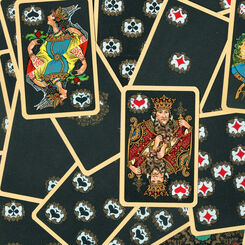
Russian Playing Cards
Playing cards were known in Muscovy as early as the last quarter of the sixteenth century.
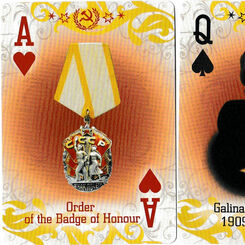
Moscow Poker
“Moscow” - from the Soviet series produced by Sprint, Ivanovo, 2013.

Karty Lyubvi
Karty lyubvi Slavyanskie (Slavonic love cards) and Karty lyubvi Starinnye (Ancient love cards).
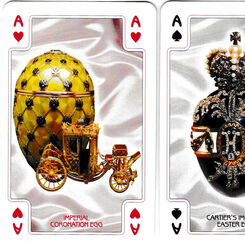
Fabergé playing cards
Kollektsiya Faberzhe karty igral’nye (Fabergé playing cards), Russia, 2005.

Sea Myths Playing Cards
Morskie mify (Sea myths) designed by Lev Liberman, Russia, 2005.
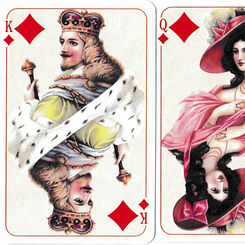
Centaurus
Centaurus: karty igral’nye suvenirnye, Russia, 2005.
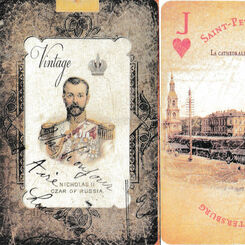
Saint Petersburg vintage playing cards
Saint Petersburg vintage photography playing cards.

Soviet propaganda posters
Propaganda posters of the Soviet Union.
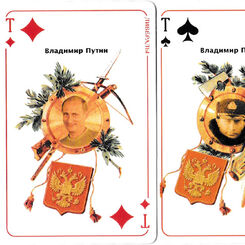
Russian Federation
Russian Federation pack featuring leading political figures of the time, c.2000.

Peterhof souvenir playing cards
Peterhof souvenir playing cards (Petergof suvenirnye igral’nye karty) published by Mednyi Vsadnik (B...
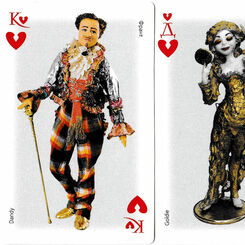
Dolls Gallery
Dolls Gallery / Galereia kukol : karty igral’nye / published by Varvara Skripkina, 2003.

Treasures of the Russian Museum
Treasures of the Russian Museum / Russkii Muzei : suvenirnye igral’nye karty.

Russian Cities Coats-of-Arms
Rossiia / Municipal Coats-of-Arms of Russian Federation.
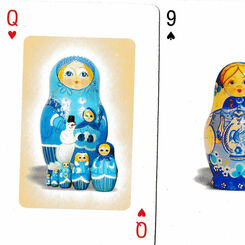
Matryoshka playing cards
The first nested doll set was carved in 1890.
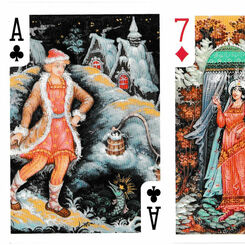
Palekh and Kholui lacquer miniatures
Palekh and Kholui lacquer miniatures.
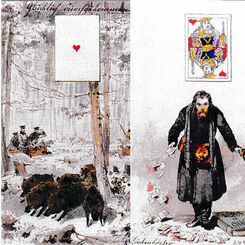
Hunting playing cards
Hunting playing cards / “Okhotnich’i karty” with illustrations by the court artist Mihály Zichy.
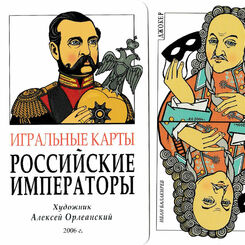
Russian Emperors
Russian Emperors playing cards / “Rossiiskie imperatory karty igral’nye” produced and illustrated b...
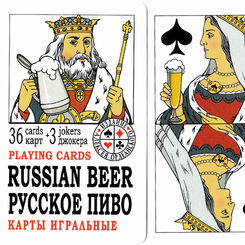
Russian Beer
Russian Beer playing cards / “Russkoe pivo karty igral’nye” produced in 2006
Most Popular
Our top articles from the past 60 days


 Your comment here. Your comment here. Your comment here. Your comment here. Your comment here. Your comment here. Your comment here. Your comment here. Your comment here. Your comment here. Your comment here. Your comment here. Your comment here. Your comment here. Your comment here. Your comment here. Your comment here. Your comment here. Your comment here. Your comment here. Your comment here. Your comment here. Your comment here. Your comment here. Your comment here. Your comment here. Your comment here. Your comment here. Your comment here. Your comment here. Your comment here. Your comment here.
Your comment here. Your comment here. Your comment here. Your comment here. Your comment here. Your comment here. Your comment here. Your comment here. Your comment here. Your comment here. Your comment here. Your comment here. Your comment here. Your comment here. Your comment here. Your comment here. Your comment here. Your comment here. Your comment here. Your comment here. Your comment here. Your comment here. Your comment here. Your comment here. Your comment here. Your comment here. Your comment here. Your comment here. Your comment here. Your comment here. Your comment here. Your comment here.




















